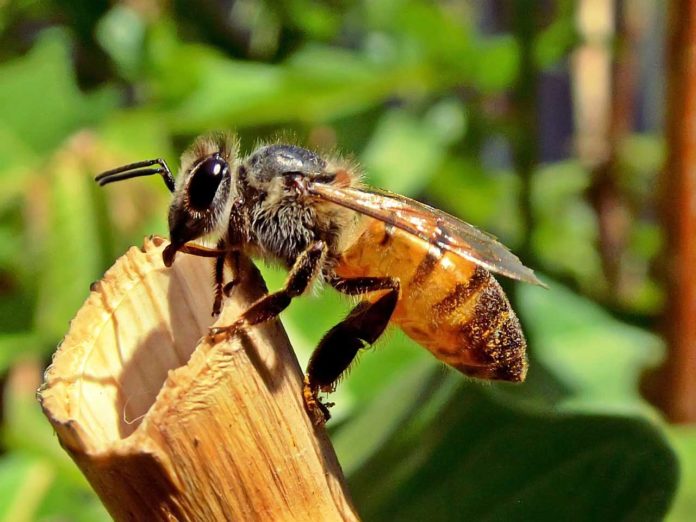In the past study, scientists at the RMIT University have discovered that bees can do basic mathematics, building on a groundbreaking finding that bees understand the concept of zero. Now, scientists in a new study have discovered that their tiny brains can link symbols to numbers.
The discovery is expected to highlight how numerical abilities may have evolved over millennia. It also holds the potential to open up new possibilities for communication between humans and other species.
Associate Professor Adrian Dyer said, “while humans were the only species to have developed systems to represent numbers, like the Arabic numerals we use each day, the research shows the concept can be grasped by brains far smaller than ours.”
“We take it for granted once we’ve learned our numbers as children, but being able to recognize what ‘4’ represents actually requires a sophisticated level of cognitive ability. Studies have shown primates and birds can also learn to link symbols with numbers, but this is the first time we’ve seen this in insects.”
“Humans have over 86 billion neurons in our brains, bees have less than a million, and we’re separated by over 600 million years of evolution. But if bees have the capacity to learn something as complex as a human-made symbolic language, this opens up exciting new pathways for future communication across species.”
Dr. Scarlett Howard, formerly a Ph.D. researcher in the Bio Inspired Digital Sensing-Lab (BIDS-Lab) at RMIT, conducted the bee experiment.
Individual honeybees were trained to enter a Y-maze through a small entrance hole. The bees had to fly through an initial entrance hole to enter a chamber where they would view the sample stimulus.
They were then tested on whether they could apply their new knowledge to match the character to various elements of the same quantity. A second group was trained in the opposite approach, matching a number of elements with a character.
Howard noted, “While both could grasp their specific training, the different groups were unable to reverse the association and work out what to do when tested with the opposite.”
“This suggests that number processing and understanding of symbols happens in different regions in bee brains, similar to the way separate processing happens in the human brain. Our results show honeybees are not at the same level as the animals that have been able to learn symbols like numbers and perform complex tasks.”
“But the results have implications for what we know about learning, reversing tasks, and how the brain creates connections and associations between concepts. Discovering how such complex numerical skills can be grasped by miniature brains will help us understand how mathematical and cultural thinking evolved in humans, and possibly, other animals.”
Dyer said, “Studying insect brains offers intriguing possibilities for the future design of highly efficient computing systems. When we’re looking for solutions to complex problems, we often find that nature has already done the job far more elegantly and efficiently.”
“Understanding how tiny bee brains manage information opens paths to bio-inspired solutions that use a fraction of the power of conventional processing systems.”
The study is represented in the journal Proceedings of the Royal Society B.
